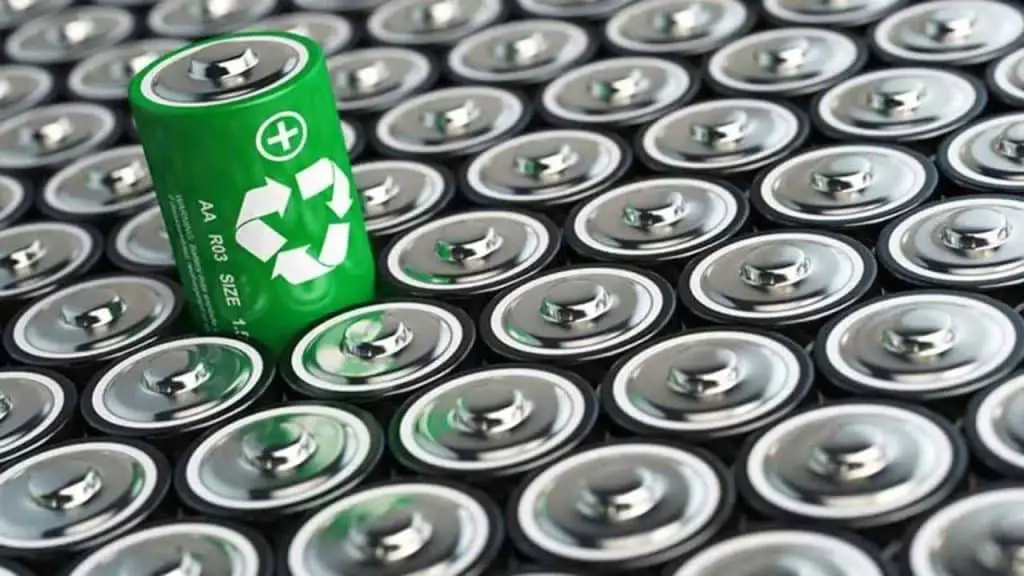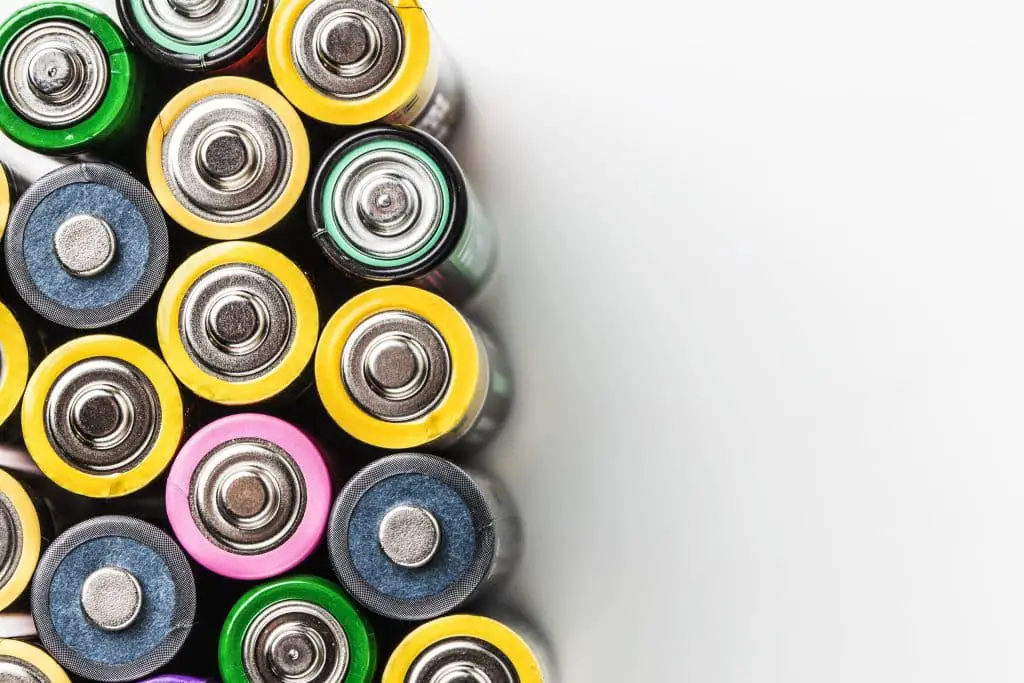Texas Tech University’s Jennifer Guelfo was part of a research team that found that the use of a new subclass of perfluoroalkyl and polyfluoroalkyl (PFAS) chemicals in lithium-ion batteries is a growing source of air and water pollution.
Lithium-ion batteries are a growing source of PFAS pollution
The results were published in a study on Nature Communications .
Tests conducted by the research team also found that these PFAScalled bis-perfluoroalkyl sulfonimides (bis-FASI), have environmental persistence and ecotoxicity comparable to older known compounds such as perfluorooctanoic acid (PFOA).
Lithium-ion batteries are a critical component of the growing clean energy infrastructure, with uses in electric cars and electronics, and demand is expected to grow exponentially over the next decade.
“Our findings reveal a dilemma associated with the production, disposal, and recycling of clean energy infrastructure,” said Guelfo, associate professor of environmental engineering in the Edward E. Whitacre Jr. College of Engineering.
“Reducing carbon emissions with innovations like electric cars is critical, but it should not have the side effect of increasing PFAS pollution. We need to facilitate technologies, production controls, and recycling solutions that can combat the climate crisis without releasing highly recalcitrant pollutants.”

The researchers sampled air, water, snow, soil, and sediment near manufacturing facilities in Minnesota, Kentucky, Belgium, and France. Concentrations of bis-FASI in these samples were commonly at very high levels.
The data also suggested that bis-FASI atmospheric emissions could facilitate long-range transportation, meaning that areas far from production sites could also be affected. Analysis of several municipal landfills in the southeastern United States indicated that these compounds may also enter the environment through the disposal of products, including lithium-ion batteries.
Toxicity testing has shown that bis-FASI concentrations similar to those found at sampling sites can alter behavior and basic energy metabolism processes in aquatic organisms. The toxicity of bis-FASI has not yet been studied in humans, although other, more well-studied PFAS are linked to cancer, infertility, and other serious health hazards.
Treatability tests showed that bis-FASIs do not decompose during oxidation, which has also been observed for other PFASs. However, the data showed that bis-FASI concentrations in water could be reduced by using granular activated carbon and ion exchange, methods already used to remove PFASs from drinking water.

“These results demonstrate that treatment approaches designed for PFOA and PFOS (perfluorooctanesulfonic acid) can also remove bis-FASI,” said study author Lee Ferguson, associate professor of environmental engineering at Duke University. “The use of these approaches is likely to increase as treatment facilities are upgraded to comply with new EPA maximum contaminant levels for PFAS.”
Guelfo and Ferguson stress that this is a crucial moment for the adoption of clean energy technologies that can reduce carbon emissions.
“We should harness the expertise of multidisciplinary teams of scientists, engineers, sociologists and policy makers to develop and promote the use of clean energy infrastructure while minimizing environmental impacts,” Ferguson said.
“We should build on the momentum of current energy initiatives to ensure that new energy technologies are truly clean,” Guelfo added.
Research Seeks Solution to PFAS Chemicals in Waste
Texas A&M AgriLife Research scientists are searching for a better way to remove or degrade stubborn pollutants, also known as forever chemicals, from waste before they can have negative effects on human and animal health.
Eunsung Kan, Ph.D., associate professor and biological engineer in AgriLife Research in the Department of Biological and Agricultural Engineering at Texas A&M, has published a study that focuses on fundamentally understanding the biological treatment of waste containing perfluoroalkyl and polyfluoroalkyl substances, or PFAS, that are difficult to degrade by biological means.
PFAS are found in a variety of synthetic chemicals used in numerous industrial sectors that produce countless products, including appliances, foams, fabrics, and food packaging.
“We believe this study helps address fundamental questions about pollutants that are difficult to remove or degrade,” Kan said. “PFAS pose a challenge that could impact long-term sustainability and health. That makes this type of research incredibly important and impactful.”

Kan works at the Texas A&M AgriLife Center in Stephenville. His research focuses on converting agricultural wastes, including manure and crop residues, into biofuels, bioproducts, and biochar for agricultural, environmental, and energy sustainability.
Because PFAS are difficult to degrade, there are major concerns that the accumulation of toxic PFAS compounds could impact soil and water quality and ultimately human, plant, and animal health. Current physical and chemical techniques used to treat PFAS in wastewater and solid waste require high levels of energy and chemicals. These treatment methods are expensive and do not fully degrade PFAS.
Kan said this lack of PFAS degradation is a serious problem for existing systems, which produce a sludge containing PFAS compounds. The sludge is then landfilled, but there are concerns that these pollutants could enter the surrounding environment or the watershed through a runoff event.
Most solid wastes and sewage sludge are treated by biological means called anaerobic digestion, or AD. Complex microbial communities in AD systems break down and convert solid wastes into biogas while the undigested sludge is disposed of or applied to land.

The study showed how two commonly known and difficult-to-degrade PFAS compounds, perfluorooctanoic acid, PFOA, and perfluorooctane sulfonic acid, PFOS, are degraded by AD systems. The researchers also sought to understand the chemicals’ effects on microbial communities.
Kan believes the study will help guide the design of AD systems that use multiple technologies to holistically address the most stubborn PFAS.
“Degrading PFAS using different means, including high temperatures, high pressure, and high doses of chemicals, is not very practical,” he said. “The motivation was to find a cost-effective way to degrade these ‘forever chemicals’ to prevent them from accumulating in soil and water. It’s important, based on the results, that we create a more comprehensive treatment system.”
Choi’s experiments found that anaerobic digestion was significantly inhibited and microbial communities were negatively affected by the presence of PFOA, especially as PFOA concentrations increased.
Although all PFAS compounds are difficult to degrade, the results of this study highlight the varying degrees of difficulty and toxicity among individual chemicals. Compared to PFOA, PFOS had very limited impact on AD efficiency and microbial communities, with only a reduction of up to 7% at high concentrations. The AD process was able to degrade PFOS by 30%-80%, depending on pollutant concentrations, while no degradation of PFOA occurred.

These data collected during the study provide critical information that scientists can use in further research and to guide the design of waste, wastewater, and water treatment technologies needed to fully degrade PFAS before they enter the environment.
“This study showed that we need to rethink how we deal with these specific PFAS compounds,” Kan said. “For example, there could be combinations of other technologies—heat, sunlight, chemicals—to help these AD systems degrade pollutants more efficiently and reduce the potential for them to enter the environment.”
#PFAS #Lithiumion #batteries #growing #source